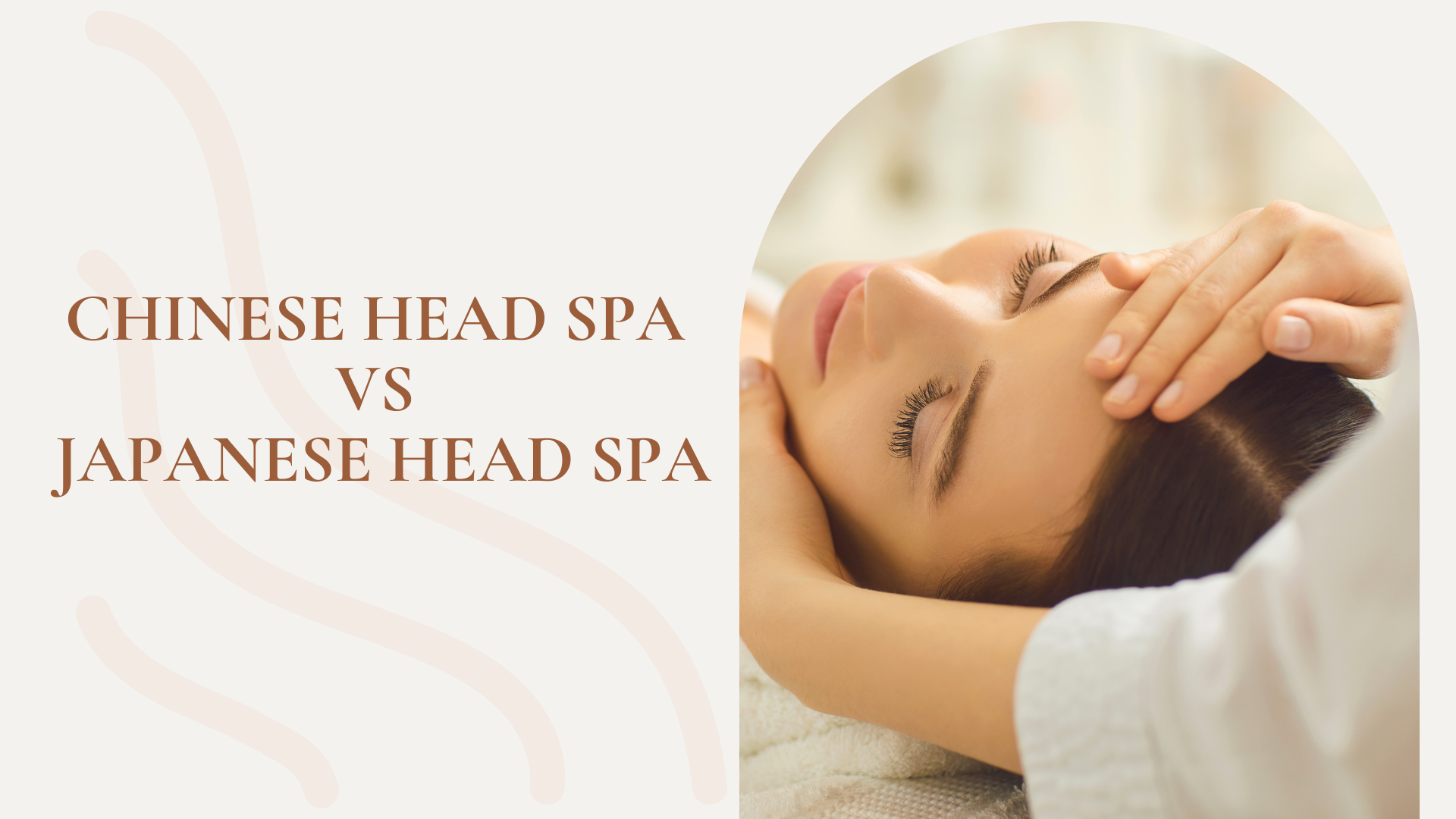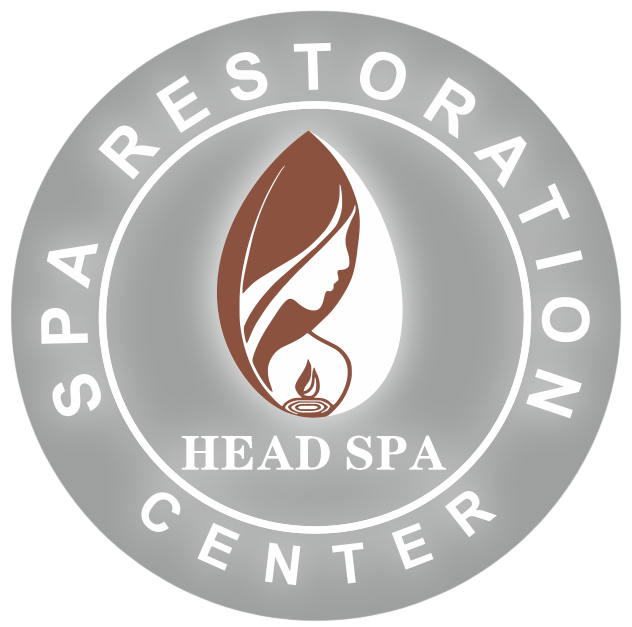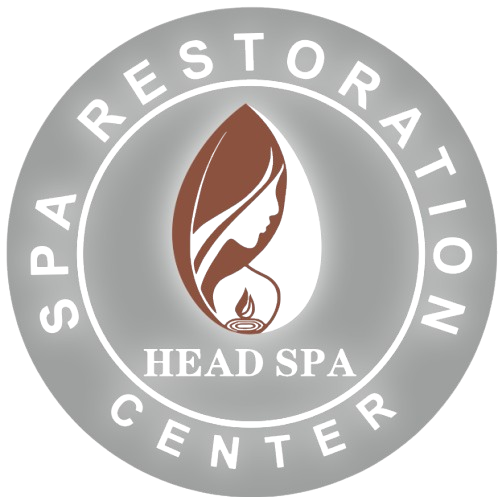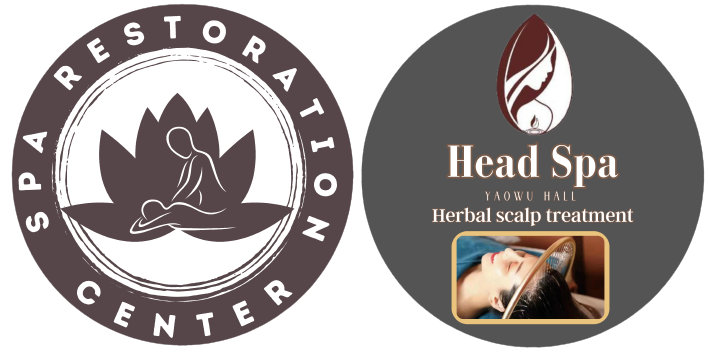
Chinese Head Spa: Benefits, Techniques & Japanese Comparison
The Chinese head spa is not only a beauty treatment but also an ancient wellness ritual based on Traditional Chinese Medicine (TCM). This forms a scalp-based therapy using pressure points that are designed to allow blood flow and tension to flow out of the body and relax the mind.
In this ultimate guide, we go into all the details about this therapeutic journey: its background, its advantages, and the approaches you’ll find, as well as just how you can try it, either at home or with us.
What Is a Chinese Head Spa?
A Chinese head spa is a therapeutic scalp treatment combining ancient acupressure, herbal infusions, and deep massage techniques. It’s designed to:
- Improve scalp and hair health
- Enhance relaxation
- Stimulate energy pathways (meridians)
Unlike a regular shampoo or massage, the Chinese head spa focuses on restoring balance to your entire system—body, mind, and soul.
Chinese Head Spa Origins and History
Traditional Chinese medicine, which forms the basis for Chinese head spas (Tui Na or An Mo), has been around for thousands of years.
The ancient art is built on the assumption that energy, or flows through the body in certain pathways, known as meridians. Practitioners work to restore balance by focusing on specific points in the head, neck and shoulders; restoring a humble flow of energy ensures that everything stays functional and relaxed.
How Does a Chinese Head Spa Work?
A Chinese Head Spa session is a collective therapy that ultimately focuses on getting the mind to relax, the scalp energized and good health developed. Here is how a typical 60–90 minute session flows from beginning to end:
Step 1: Scalp Analysis
A scalp analysis in combination with visual inspection is your first step using scientifically based imaging tools and professional inspection. This allows our experts to pinpoint important concerns like dryness, oiliness, dandruff, or sensitivity.
Step 2: Herbal Steam Treatment
After that, a warm Chinese herbal head treatment with time-honored herbs such as He Shou Wu and ginger root was steamed over your scalp. This medicated steam dilates the pores, increases blood circulation and makes the scalp more receptive to the nutrients in the next three steps. The mild heat prepares a warm womb with gentle energy that softens the scalp for a deep cleanse, as well as promoting relaxation for the ultimate revitalizing experience.
Step 3: Scalp Exfoliation
It starts with your scalp analysis — using amplified imaging instruments and clinical visual examination. This allows our experts to spot the main issues—dryness, oiliness, dandruff, or sensitive skin. This helps us customize the treatment to your specific scalp condition.
Step 4: Deep Oil Massage
The warm oil massage is a signature step in the session, which is done with the selection of herbal oils rich in vitamins and minerals according to your scalp condition. They are lightly massaged into your scalp using ancient Chinese practices, giving nutrition to hair roots, stimulating blood circulation, and providing deep moisture. It is soothing therapy at its best.
Step 5: Acupressure Stimulation
Inspired by ancient practices, acupressure involves the use of pressure on certain meridian points on the scalp, neck and shoulders to melt away deeply held stress and activate the nervous system. This method of chi kung, based on Tai Chi principles, releases stuck energy (Qi), increases mental clarity and helps alleviate several symptoms, including severe headache, eye strain and insomnia.
Step 6: Aromatherapy & Sound Therapy
Then comes the final step, an experience with aromatherapy alongside ambient calming sounds. Aromatherapy for emotional balancing with essential oils diffused, soothing music, or the sounds of nature creates a meditative atmosphere. This sensory voyage will enable your mind and body to relax and conclude your treatment on a serene note.
What Are the Most Popular Techniques Used in Chinese Head Spas?
At Spa Restoration Center, we use time-tested techniques blended with modern wellness practices:
Traditional Techniques
- Finger rolling and tapping to stimulate meridians
- Circular motion kneading to enhance lymphatic drainage
- Pressure-point holding to calm the nervous system
Tools & Equipment
- Jade combs for Qi stimulation
- Wooden Gua Sha tools for exfoliation
- Essential oil diffusers for a sensory-rich experience
Different regions in China (like Shanghai and Guangzhou) have their own specialized strokes, but all aim to restore energy harmony.
What Are the Benefits of a Chinese Head Spa?
People often ask, “Is a Chinese head spa just for relaxation?” Not at all. It’s a full-body reset that starts at your scalp.
Health Benefits
- Boosts blood circulation, especially around the temples and crown.
- Relieves migraines and tension headaches
- Reduces anxiety and mental fatigue
- Promotes restful sleep
- Detoxifies the scalp by clearing blocked follicles
- Encourages hair growth by revitalizing dormant hair roots
- Enhances focus and mental clarity
Who Should Try a Chinese Head Spa?
Chinese head spas aren’t only for the stressed-out or beauty-conscious. They’re ideal for:
- Corporate professionals facing screen fatigue
- New moms with postpartum hair loss
- Students dealing with exam stress
- Older adults looking to maintain cognitive clarity
- Anyone battling insomnia or chronic fatigue
Where to Get a Chinese Head Spa Near You
Looking for an authentic experience?
Check for:
- TCM-certified therapists
- Natural, herbal products
- Clean and calming environment
- Transparent pricing and reviews
Spa Restoration Center offers premium Chinese head spa treatments in a relaxing, modern space rooted in tradition.
📍 Book your appointment now at Spa Restoration Center – Your scalp (and soul) will thank you.

What’s the Difference Between Chinese and Japanese Head Spas?
Both Chinese head spas and Japanese head spas have carved out their respective niches in the world of holistic wellness. But how exactly do they compare to one another?
Let’s explore the philosophy, techniques, and benefits of Japanese head spas and see how they measure up to the deeply rooted traditions of Chinese herbal head treatments offered at Spa Restoration Center.
What is a Japanese head spa?
Rooted in whole-body wellness, Japanese head spas often incorporate the age-old Japanese art of massage known as Amma (or Anma). Instead of just dealing with the head, these therapies begin from the ground up—your feet, back, and also shoulders—upwards to the scalp.
Core Philosophy
Its core idea is holistic therapy: curing body, mind, and spirit as one interconnected process. Japanese head spas target the entire body to loosen tension in order to open up channels for clear thought and emotional stability.
How Does Japanese Head Spa Therapy Work?
A Japanese head spa session is a sensory journey that may begin with a full-body massage using a variety of strokes and techniques:
Common Massage Methods:
- Effleurage: Calm the nervous system with long, gliding strokes.
- Petrissage: Deep kneading to work out knots in the muscles.
- Tapotement: A rhythmic tapping motion you would use in order to get the circulation up.
After the body has been placed in a relaxed state, the focus moves up to the head. Through specific movements like circular motions or light kneading/stretching, the therapist applies targeted pressure at the scalp and neck with their fingers, palms, or knuckles.
“It’s like clearing the clutter from your mind, one gentle motion at a time.”
Benefits of Japanese Head Spas
Many people walk away from a Japanese head spa feeling lighter, calmer, and more grounded. Here’s what you might experience:
Key Benefits:
- Reduction in stress and anxiety
- Enhanced blood circulation and lymphatic drainage
- Relief from muscle tension and stiffness
- Improved sleep quality
- Heightened sense of well-being
Table: Comparing Chinese vs. Japanese Head Spas
| Feature | Chinese Head Spa | Japanese Head Spa |
| Origin | Traditional Chinese Medicine | Modern Japanese aesthetics |
| Focus | Acupressure, herbs, meridians | Relaxation, scalp cleansing |
| Techniques | Deep oil massage, Qi balancing | Foam wash, head stretching |
| Tools Used | Gua Sha, herbal oils, jade combs | Scalp brush, microbubbles |
How to Choose Between a Chinese Head Spa and a Japanese Head Spa
The right choice comes down to your goals and preferences. Both therapies offer amazing benefits, but one may better suit your needs depending on what you’re looking to achieve.
Ask Yourself:
- Where do you carry tension?
If it’s mostly in your head, neck, or shoulders, a Chinese head spa like the ones we offer at Spa Restoration Center may provide the most targeted relief. - Do you want a full-body experience?
If you’re craving a comprehensive reset, a Japanese head spa might be ideal. - How much time do you have?
Chinese head spa sessions can be short and sweet. Japanese ones usually run longer due to their body-inclusive nature. - Do you prefer herbal remedies?
Chinese head spas make use of powerful medicinal herbs, oils, and TCM-inspired techniques, whereas Japanese therapies are more massage-oriented.
Chinese Herbal Head Treatment vs. Japanese Head Spa: Key Takeaways
While both Chinese and Japanese head spas offer unique experiences and potential benefits, there are several key differences to consider:
Focus Area: Chinese head spas focus solely on the head, neck and shoulder areas, whereas Japanese head spas sometimes include a body massage as well.
Techniques: Chinese head therapy spas tend to focus more on acupressure and targeted scalp massage using specific and traditional tools, while Japanese head spas utilize a wider variety of massage techniques such as effleurage, petrissage, and tapotement, which you can read more about in this post.
Philosophical Approach: Chinese herbal head therapies are based on traditional Chinese medicine and the idea of qi, while Japanese head spas adopt a holistic method where mind, body, and spirit are seen as one.
Use of Oils and Ointments: In Chinese head spas, herbal oils or ointments may be used, whereas in Japanese head spas, whether or not oils are used depends on the therapist.
Can a Chinese Head Spa Help with Hair Loss?
Yes, absolutely—and here’s why:
TCM Explanation:
Hair loss is linked to kidney deficiency and poor blood circulation in TCM. Chinese head spas address both through scalp acupressure and herbal infusions.
Common Herbs Used:
- He Shou Wu (Fo-Ti): Restores color and strength
- Ginger extract: Boosts blood flow
- Ligusticum: Revitalizes follicles
Many of our clients at Spa Restoration Center have reported thicker hair within 6–8 weeks of regular treatment.
Final Thoughts: The Healing Power of a Chinese Head Spa
A Chinese head spa is not just about getting a massage; you will walk out with your body reset from the top down. Originating from principles of Traditional Chinese Medicine, it combines herbal therapy, acupressure and relaxation to release tension, promote hair health and restore harmony.
Perfect if you want to decompress, meditate or awaken your scalp with this timeless remedy—it actually works.
At Spa Restoration Center, we bring you an authentic Chinese head spa experience tailored just for you.
📍 Visit Spa Restoration Center and let your head (and soul) breathe again.
FAQs About Chinese Head Spas
What makes a head spa treatment different from a regular salon hair wash?
Head spa is so much more than a regular wash and blow in the salon. A regular shampoo only cleanses your hair, whereas a true head spa is a scalp care ritual that detoxes, nourishes, and deeply relaxes the senses. Consider it like a facial for your scalp, one that includes a deep scalp massage, Chinese herbs or Japanese-inspired essential oils, and a soothing neck massage that releases tension. Not only does it give you nice hair, but the soothing & calming effects of being in the tub make you feel like a human again, stress-free and at peace.
Can a head spa treatment help with itchiness and dry scalp?
Absolutely. While a head spa can be beneficial, it is also a spa treatment that can actually treat scalp-related issues such as dry scalp, itchiness, or flakes if you have the right head spa service. The back, for example: sometimes a mask will be applied, along with serums for hair conditioning, followed by a gentle massage and deep-clean shampoos with healing herbs. Typical of luxury spas or hair salons like us, we have long been using ancient prescriptions, including traditional Chinese herbal products and hair products that are scalp- and hair-friendly in their entirety, to revive your scalp and its balance to generate healthier hair starting with the root.
What can I expect during a luxury head spa appointment?
A luxury head spa experience is nothing short of pure bliss. From the moment you recline at the shampoo basin, you’re wrapped in an atmosphere of relaxation and wellness. Here’s what a typical session might include:
- Warm herbal hair bath to soften buildup
- Soothing head massage using aromatic oils
- Optional shiatsu techniques or head massage tools
- Keratin treatments or conditioning masks for a sleek finish
- Blow-dry and styling using premium hair products
It’s not just a service—it’s a relaxing and rejuvenating ritual that targets your head and neck, leaving your hair and scalp refreshed and your mind at peace.
Is there a difference between a Chinese and a Japanese head spa experience?
Both provide amazing relaxation benefits, but there are some minor differences based on tradition. Chinese head spa treatments are typically focused on all essential herbs, acupressure and energy-balancing techniques to promote general well-being. In contrast, a true Japanese head spa, or Japanese-inspired head spa, typically emphasizes belly foam cleansing, shiatsu, and luxury hair care treatments. They both promote healthy hair growth and clean your scalp deeply, so your choice may depend on if you prefer a detox and herb approach or a luxury cleansing and scalp massage experience.



Leave a comment